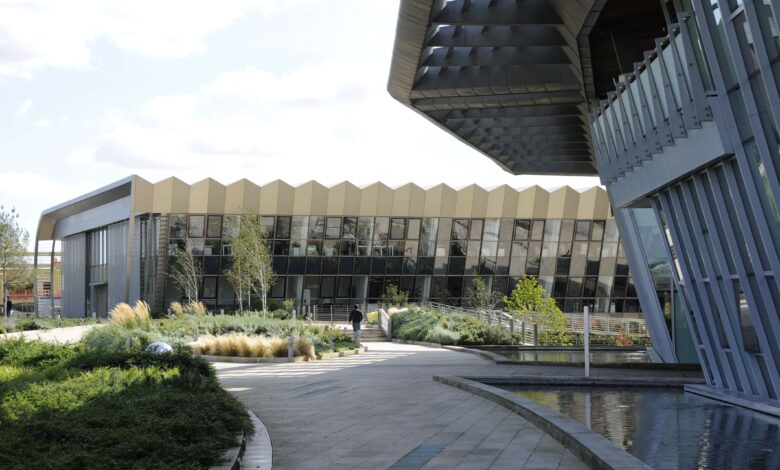
EfficiencyIT, a UK specialist in data centres, IT and critical communications environments, has shared the results of a data centre digital transformation initiative for its customers at the Wellcome Sanger Institute, a world-leader in genomic research and bioinformatics.
The project sought to increase the energy efficiency of its 4.5MW, genomic data centre in Cambridge – one of Europe’s largest, independent and privately owned, research facilities – and improve both the resiliency and visibility of its critical systems.
Using Schneider Electric EcoStruxure IT Advisor, on-premises data centre infrastructure management (DCIM) software, and more than 300 custom-designed APC Rack Power Distribution Unit (PDU) systems, the companies have worked together to reduce the data centres energy consumption by an average of thirty-three percent (33%) – leveraging data analytics, machine learning, and intelligent power monitoring to increase visibility across its data centre and distributed IT estate, remove stranded capacity and manage operating expenses (OpEx), despite the increasing cost of energy.
At the same time, the Wellcome Sanger Institute has also utilised the latest advancements in sequencing equipment, high-performance computing (HPC) and graphics processing unit (GPU) technologies from a host of world-leading manufacturers to increase its computational output by 50%. This computational capacity has been integral in accelerating the production of valuable research data, allowing the Wellcome Sanger Institute to both undertake and contribute to a host of ground-breaking projects.
Additionally, a new blog from NVIDIA has shared how the Wellcome Sanger Institute is turning to NVIDIA accelerated computing to help save energy while saving lives, and that by using its technologies, the Institute could save $1 million and 1,000 megawatt-hours each year – about the amount of energy needed to power an average American home for a century.
“The technologies hosted within our data centre power a host of HPC and GPU-intensive systems for both the complex genomic research we undertake on campus, and the applied sciences undertaken by our partners,” said Simon Binley, Campus Data Centre Operations Manager, Wellcome Sanger Institute. “As the hosting, density and energy requirements of these technologies change, it’s vital that we keep the science as sustainable as possible. Our work with EfficiencyIT and Schneider Electric has played a key role in helping us save energy, while increasing our computational capability, significantly.”
Data centres and lifesaving science
Based at the Wellcome Genome Campus, and in the heart of the ‘Golden Triangle’ – a thriving UK life sciences cluster that includes London, Oxford, Cambridge, and the greater southeast of England – the Wellcome Sanger Institute conducts key research into life sciences, human disease and genomic sequencing.
The vast quantities of data produced by its digital sequencers, and the speed at which it is generated, requires high-density storage and hosting within its on-premises data centre, combined with high performance computing (HPC) processing capabilities, AI, and GPUs. Such technologies are fundamental to the science and demonstrate the key role the data centre plays within its research.
Working in partnership with EfficiencyIT, the Institute began the project in 2019, selecting Schneider Electric’s EcoStruxure IT Advisor DCIM software, and leveraging its artificial intelligence (AI) and machine learning capabilities to increase visibility across its distributed IT estate, making informed decisions to reduce the data centres energy consumption. Rack-level metering and monitoring, enabled via custom-designed APC PDU’s were also essential, helping the Institute meticulously track power consumption at the infrastructure layer.
Prior to that, the Institute had also deployed a host of APC Smart-UPS uninterruptible power supplies (UPS) to protect the sequencing machines hosted in its labs, and protect them from power failures, where a single outage could cause a catastrophic loss of data. These sequencers produce up-to 4 terabytes (TB) of data per day.
“EfficiencyIT has been a strategic partner to the Sanger Institute’s data centre operations team for many years, and to see this project go full circle and deliver these outstanding energy savings is testament to their vision for sustainable, cutting-edge science, powered by best-in-class technology,” said Nick Ewing, Managing Director, EfficiencyIT. “Together, not only have we been able to reduce their data centre energy consumption by a third, but we’ve been able to gain valuable data to help improve operational efficiency, and increase the reliability of the power systems deployed in labs across the campus.”
“Data centres, HPC, and AI have been integral to the life science sector for decades, and play a vital role in global lifesaving research, from cancer and dementia to infectious diseases,” said Mark Yeeles, VP Secure Power Division, Schneider Electric UK&I. “We’re delighted to see the results of this data centre sustainability initiative, and to see the benefits our EcoStruxure platform has delivered to the Wellcome Sanger Institute, showcasing how critical national infrastructure can be efficient, resilient, and sustainable.”




